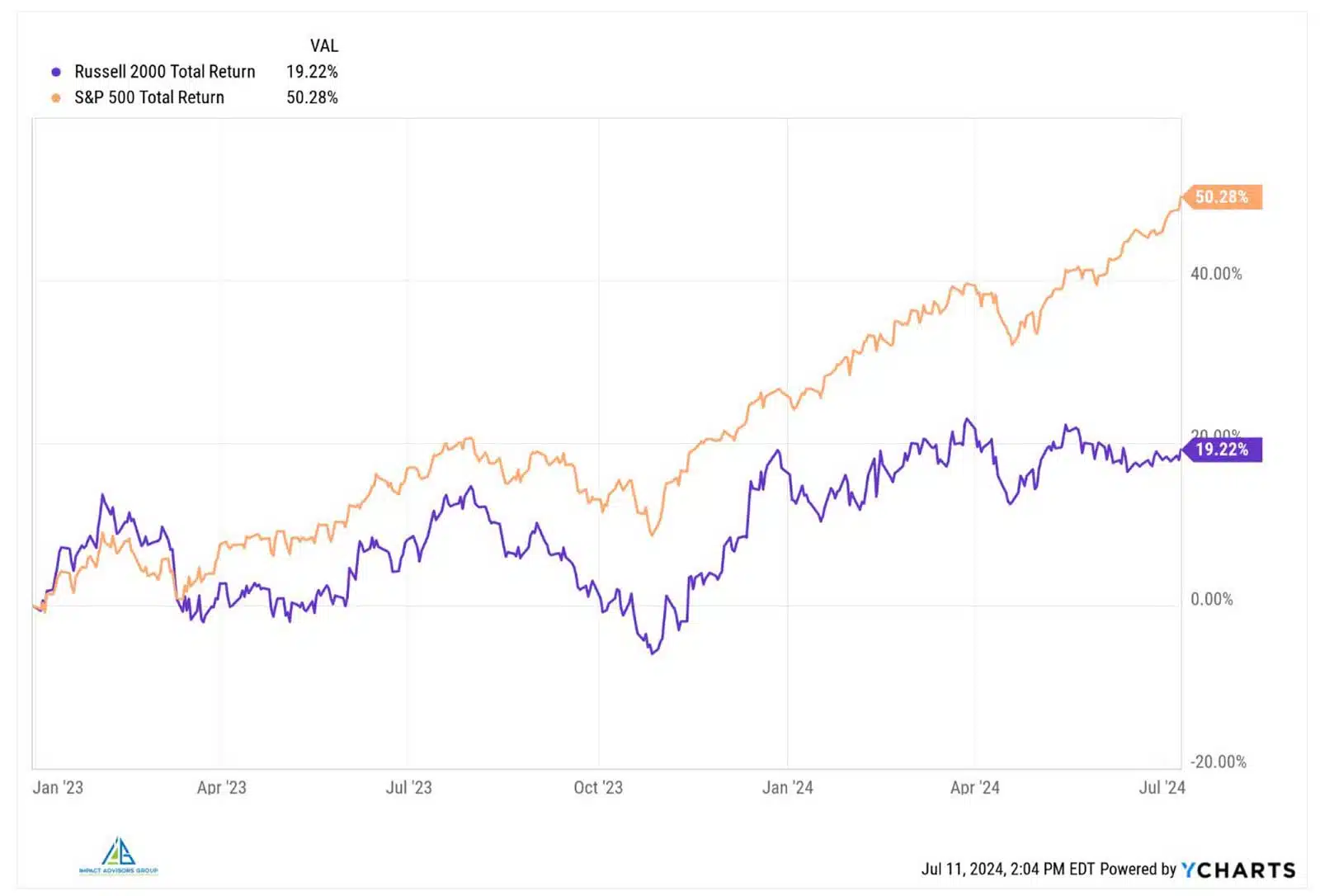
The One Big Beautiful Bill Act’s Impact on Education
Understand new 529 plan rules under the One Big Beautiful Bill Act and what they mean for your family’s education savings strategy.

When we look at history, generally in a bear market riskier asset classes like Small Cap Stocks decline more than Large Caps. Then when the market recovers and shifts to a bull market phase, it is Small Caps that generally lead the rally. That definitely hasn’t happened recently. The chart below shows that Small Cap Stocks (represented by the Russell 2000 Index) have significantly lagged Large Cap Stocks for the last 18 months.

After a brief market correction in 2022 mega cap stocks have been the only game in town. We have discussed before how “The Magnificent Seven” stocks (Alphabet, Amazon, Apple, Meta, Microsoft, Nvidia, and Tesla) have dominated the returns of the S&P 500. In 2023, the S&P 500 returned 24.2% while the Magnificent Seven rose 75.7%. The bet on AI has pushed Nvidia’s stock price up 172% YTD, and 823% in the last 18 months. This concentrated market performance has caused a similar divergence between Large Cap Growth Stocks and Large Cap Value Stocks.

Economist Herb Stein said “If something cannot go on forever, it will stop.” Watching this performance trend is difficult for those of us who subscribe to evidence-based investing. (Evidence-based means evidence accumulated over 30 plus years, not just one or two.) To those of us who lived through the Tech bubble some 20 years ago, some of this looks extremely familiar. We know that the current trend of Growth/MegaCap/Tech outperformance won’t last forever. We just don’t know how long it will take for the market trends to change.

Understand new 529 plan rules under the One Big Beautiful Bill Act and what they mean for your family’s education savings strategy.

Beating the market is rare. Learn why most active funds lag and why index investing (buying the haystack) can be the smarter choice.

Customer concentration occurs when a large part of a company’s revenue comes from a single or small group of customers/clients.

The One Big Beautiful Bill Act (OBBBA) was signed into law on July 4 and encompasses hundreds of provisions.